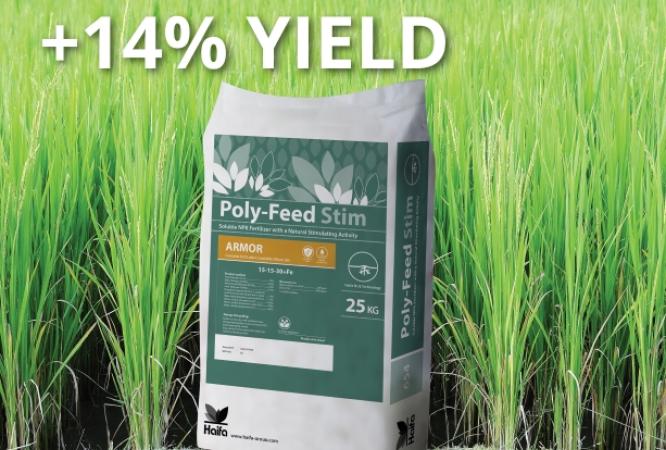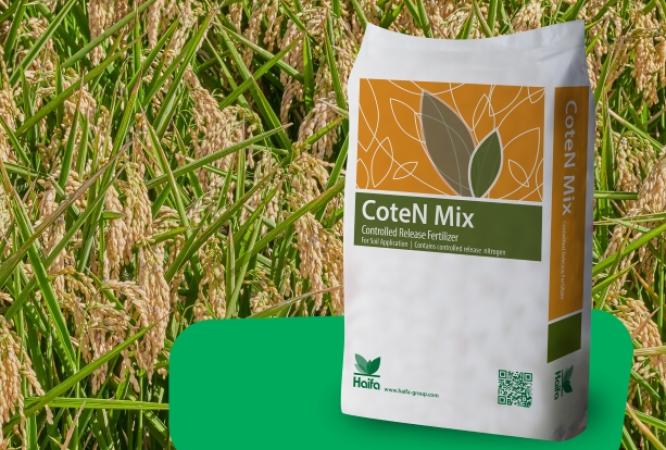Our recommendation for using Multi-rice fertilizer, either sprayed by airplane or by tractor operated sprayer
Treatment timing
Three treatments are recommended, timed as follows:
| Physiological stage | Spraying by Airplane | |
|---|---|---|
| Total rate | 12Kg/Ha Multi-Rice | |
| I. Tillering | Spray volume | 100 liter/Ha |
| Solution concentration (w/v) | 12 % | |
| 30-35 days after sowing (for short season varieties - 90-100 days, spray at about 15 days intervals) Physiological stage II. 1 week before flowering. 45-50 days after sowing | ||
| Tractor operated sprayer | ||
| Total rate | 12 Kg/Ha Multi-Rice | |
| Spray volume | 400 liter/Ha | |
| Solution concentration (w/v) | 3 % | |
| Spraying by Airplane | ||
| Same as above | ||
| Tractor operated sprayer | ||
| Same as above | ||
| Physiological stage | Spraying by Airplane | |
| III. 1 week after flowering. 60-65 days after sowing | Same as above | |
| Tractor operated sprayer | ||
| Same as above | ||
Notes:
Adjuvant/surfactant are always recommended (As generally practiced for foliar sprays).
Compatibility. Multi-K is highly compatible with a wide range of pesticides and growth regulators, commonly used in field-crops. It is also compatible with other plant nutrients used for correction of deficiencies (Mg, Zn, etc.). Nevertheless, it is advisable to confirm compatibility by mixing a sample of the spray materials at the recommended concentration, before adding to the mix tank.
Safety Measures. Spray should be applied when the plants are fully turgid, and should be avoided during hot and dry weather. Best results are obtained when spraying in the late evening or early morning. It is recommended that this mixture will be sprayed on a small test plot, a few days prior to the comprehensive commercial treatment, so as to assess whether any adverse effects may occur.
Macro elements removed by 1 ton grain
| N | P | K | Ca | Mg | S |
|---|---|---|---|---|---|
| ----------------------- Kg/ha ------------------------- | |||||
| 18.0 | 4.0 | 20.0 | 2.0 | 2.0 | 1.7 |
Source: Kinoch: VOLHOUBARE LANDBOU, RSA. Processed by Frans Lourens, Haifa, RSA May, 1999.
Plant analysis guide
Nutrient sufficiency ranges (source: A & L, Agronomy Handbook, Ankerman & Large Eds.)
| Rice | N | S | P | K | Mg | Ca | Na | B | Zn | Mn | Fe | Cu | Al | Mo |
|---|---|---|---|---|---|---|---|---|---|---|---|---|---|---|
| ------------------------ % ------------------------- | --------------- p.p.m --------------- | |||||||||||||
| From | 2.20 | 0.20 | 0.30 | 1.80 | 0.20 | 0.25 | 0.01 | 8 | 20 | 30 | 35 | 6 | 20 | |
| To | 3.50 | 0.30 | 0.50 | 3.00 | 0.40 | 0.45 | 0.03 | 20 | 50 | 60 | 120 | 15 | 300 | |
* Plant tissue sampling procedures:
| Stage of growth | Plant Part |
|---|---|
| Prior to heading | Four uppermost leaves |
Rice – Mineral analysis values
| Leaf blades | ||
|---|---|---|
| Nutrient | Average value | Critical level |
| (%) | ||
| N | 3.20 | 1.20 |
| S | 0.25 | 0.13 |
| P | 0.33 | 0.15 |
| K | 1.65 | 0.85 |
| Mg | 0.13 | 0.07 |
| Ca | 0.29 | 0.14 |
| Na | 0.03 | |
| (ppm) | ||
| Fe | 120 | 70 |
| Al | 60 | |
| Mn | 145 | 50 |
| B | 5 | |
| Cu | 6 | 2 |
| Zn | 19 | 15 |
| Mo | 0.9 | |
Need more information about growing rice? You can always return to the rice fertilizer & crop rice






